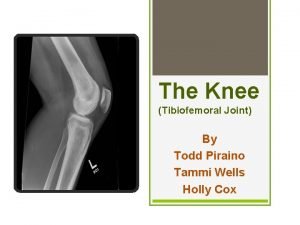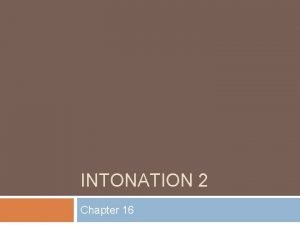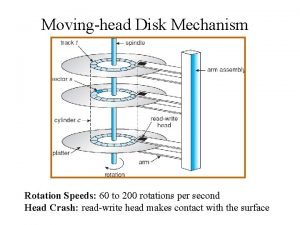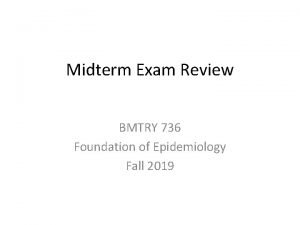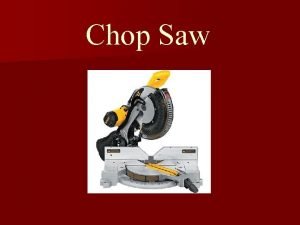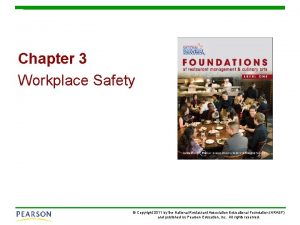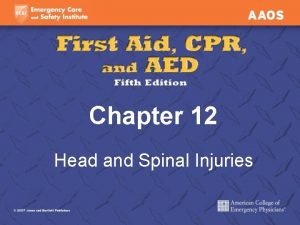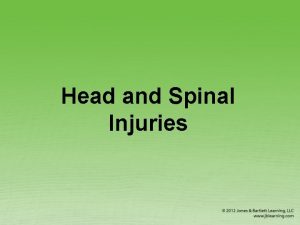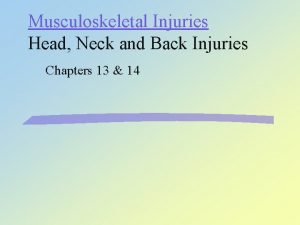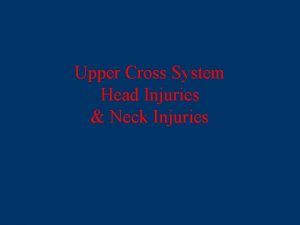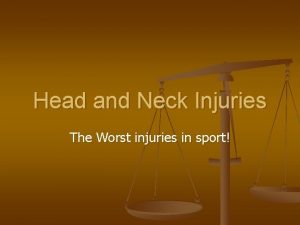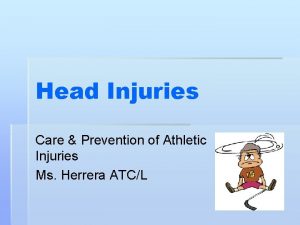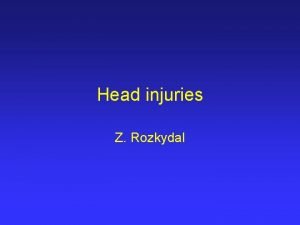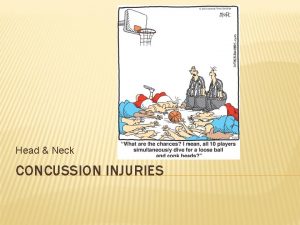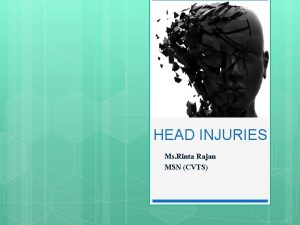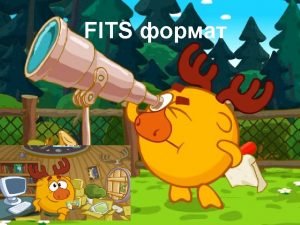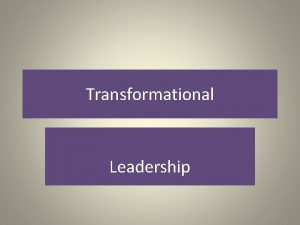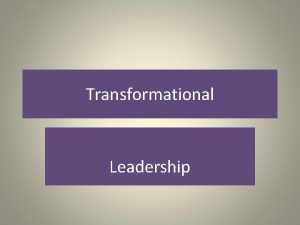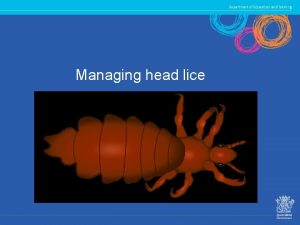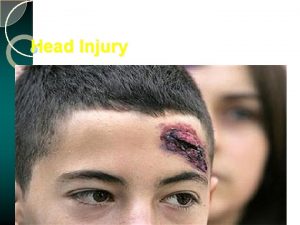Head Injuries KS 3 Head Injuries Head injuries






















- Slides: 22

Head Injuries KS 3 – Head Injuries

Head injuries A short course to learn how to help someone who has a head injury.

Learning outcomes ➤ I can identify a minor and a severe head injury ➤ I can give first aid to a casualty who has a head injury ➤ I can call for help for a casualty who has a head injury

Brain facts 1. The human brain is like a powerful computer that operates the body. 2. It stores memories and controls how we move, think and react. 3. It keeps working, even when we are sleeping. 4. The brain is protected by the skull. 5. It uses 1/5 of our bodies energy.

Skull facts 1. The skull (cranium) protects the brain (the brain is inside of it). 2. The human skull is made up of 22 different bones. 3. The muscles that enable us to make different facial expressions attach to the skull. 4. Being male or female, and your race, will affect the size and shape of your skull. 5. The jawbone is the only part of the skull that moves.

The brain ➤ The brain is extremely delicate, so it sits inside the skull for protection. ➤ An injury to the head can be dangerous and possibly cause damage to the brain. ➤ This is because the brain is the control centre for our body, controlling our awareness, our decisions, our movements, our breathing and the heart.

Activity A 18 This activity allows students to demonstrate their knowledge regarding functions of the brain. If you wish to complete this activity, please go to slide 19 or use our downloadable worksheet found on the St John Ambulance website.

Mild vs Severe Signs of a MILD head injury could be: Wound to head Dizziness and/or feeling sick Confusion Mild headache Level of response may be affected for a brief period ➤ Loss of memory at the time or immediately before the injury ➤ ➤ ➤ REMEMBER a mild head injury could become worse Signs of a SEVERE head injury could be: ➤ History of severe blow to the head ➤ Declining level of response. They may become unresponsive ➤ Casualty may become unresponsive ➤ Blood or bloodstained watery fluid leaking from ear or nose ➤ Unequal pupil size

What do you see? ➤ What do you see? Who could have a head injury? Explain your answer.

Types of head injury Concussion ➤ Temporary injury to the brain usually caused by a bump, blow or jolt to the head ➤ Temporary loss of responsiveness ➤ Confused but only for a short time ➤ Makes a full recovery Compression ➤ Bleeding and/or swelling inside of the skull Skull fracture ➤ A crack or break in the skull

Activity A 27 This activity provides students with the opportunity to research different types of head injury. If you wish to complete this activity, please go to slide 20 or use our downloadable worksheet found on the St John Ambulance website.

Seeking medical advice Following a head injury , which of the following do you think you should seek medical advice for? Drowsiness that is getting worse Seizure (fitting) Confusion Double vision A headache that is not getting better Loss of memory and/or dizziness Difficulty speaking and/or walking Vomiting

Your turn: Minor head injury 1. Help your casualty to sit down 2. Apply a cold compress to the injured area Treat any wounds 3. Monitor your casualty Watch for drowsiness and vomiting 4. Get help if necessary

Your turn: Severe head injury 1. Dial 999/112 for emergency help 2. Do NOT move your casualty if you suspect they could have a neck injury 3. Make sure the airway is open 4. Treat any serious wounds 5. Monitor casualty until emergency help arrives

Quiz time 1. Name one sign of a head injury. 2. State one way to prevent a head injury. 3. Name the part of the body which protects the brain. 4. How many bones form the skull? 5. Name one thing that the brain controls. 6. Describe how you would you treat a head injury. (minor/severe) Bonus question… Name one type of head injury and explain what it. is?

Activity A 1 This activity provides students with the opportunity to create a head injury prevention poster. If you wish to complete this activity, please go to slide 21 or use our downloadable worksheet found on the St John Ambulance website.

Check your learning I am able to: ➤ Identify minor and severe head injuries ➤ Give first aid to a casualty who has a head injury ➤ Call for help for a casualty with a head injury YES UNSURE NO

Thank you!

Activity A 18 What does the brain do? Students now have the opportunity to demonstrate their learning regarding functions of the brain. Use our downloadable worksheet which can be found on the St John Ambulance website.

Activity A 27 Types of head injuries Students now have the opportunity to demonstrate their learning about the different types of head injuries. Use our downloadable worksheet which can be found on the St John Ambulance website.

Activity A 1 Keeping safe Think of things we could do that may help prevent head injuries from happening. Design and create a poster that shows people how they can keep safe and potentially avoid getting a head injury.

Activity A 2 Skull design Time to be creative. Students can now design their own colourful paper skull. Turn them in to masks or make an amazing classroom display. Use our downloadable worksheet which can be found on the St John Ambulance website.
 Chapter 28 head and spine injuries
Chapter 28 head and spine injuries Chapter 21 caring for head and spine injuries
Chapter 21 caring for head and spine injuries Biceps femoris short head
Biceps femoris short head Dividing head formula
Dividing head formula Neck part of body
Neck part of body What is tone unit
What is tone unit The attacking firm goes head-to-head with its competitor.
The attacking firm goes head-to-head with its competitor. Tonic syllable
Tonic syllable The head of moving head disk with 100 tracks
The head of moving head disk with 100 tracks Negative suction head
Negative suction head Operation of moving head disk storage
Operation of moving head disk storage Intentional injury and unintentional injury
Intentional injury and unintentional injury An epidemiologic survey of roller skating injuries
An epidemiologic survey of roller skating injuries Chapter 12 lesson 3 planning a personal activity program
Chapter 12 lesson 3 planning a personal activity program Chapter 14 promotion of safety
Chapter 14 promotion of safety Chop saw injuries
Chop saw injuries Injuries first aid
Injuries first aid Which osha document summarizes occupational injuries
Which osha document summarizes occupational injuries Unit 15:10 providing first aid for specific injuries
Unit 15:10 providing first aid for specific injuries Bo taoshi injuries
Bo taoshi injuries Chapter 11 assessment and evaluation of sports injuries
Chapter 11 assessment and evaluation of sports injuries Pack-strap carry first aid
Pack-strap carry first aid


